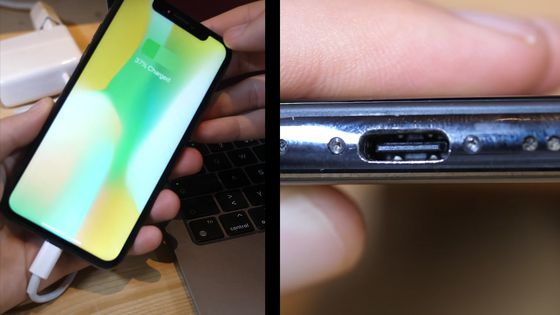You can now, technically, build your own USB-C iPhone

Robotics engineering student Ken Pillonel wowed the internet last month with a wild hack that managed to put a working USB-C port inside an iPhone X for a fully functional USB-C iPhone. And now, Pillonel has published a far more detailed video showing just how he managed to pull off the hack, along with a Github repository with technical details, CNC instructions, and information on the custom PCB that he designed for anyone brave enough to try and put together a similar hack.
The 13-minute-long video shows off the nitty-gritty of Pillonel’s mod, which is simple in theory: combining a Lightning to USB-C connection together in a daisy chain to mimic a proper USB-C port.
The video shows off virtually the whole development process. It’s quite a journey, going from proof of concept prototypes, reverse engineering the Lightning connector (and eventually, reverse engineering a fake Lightning connector), ordering a custom flexible circle board, and machining the iPhone’s case to fit the physically larger USB-C connector.
The video also shows off just how difficult it was to fit the extra circuitry, with the board bending around both sides of Apple’s Taptic Engine hardware to squeeze in all the necessary components.
Pillonel is also on eBay, where bidding has already reached $3,400 as of the time of publishing this piece, for anyone with deep pockets that’s interested in a USB-C iPhone of their own. Pillonel does note that whoever does buy the phone shouldn’t restore, update, or erase it, open it, or “use it as your daily phone.”
Lastly, Pillonel has made the whole project open source so that others can build on his existing work, whether that’s making more custom USB-C iPhone X models or porting the design to other iPhones down the line (although the full PCB design won’t be posted until after the auction finished). He also notes that he plans to continue to build on the design, with goals for improving fast-charging, waterproofing, and even enabling USB-C accessories.

